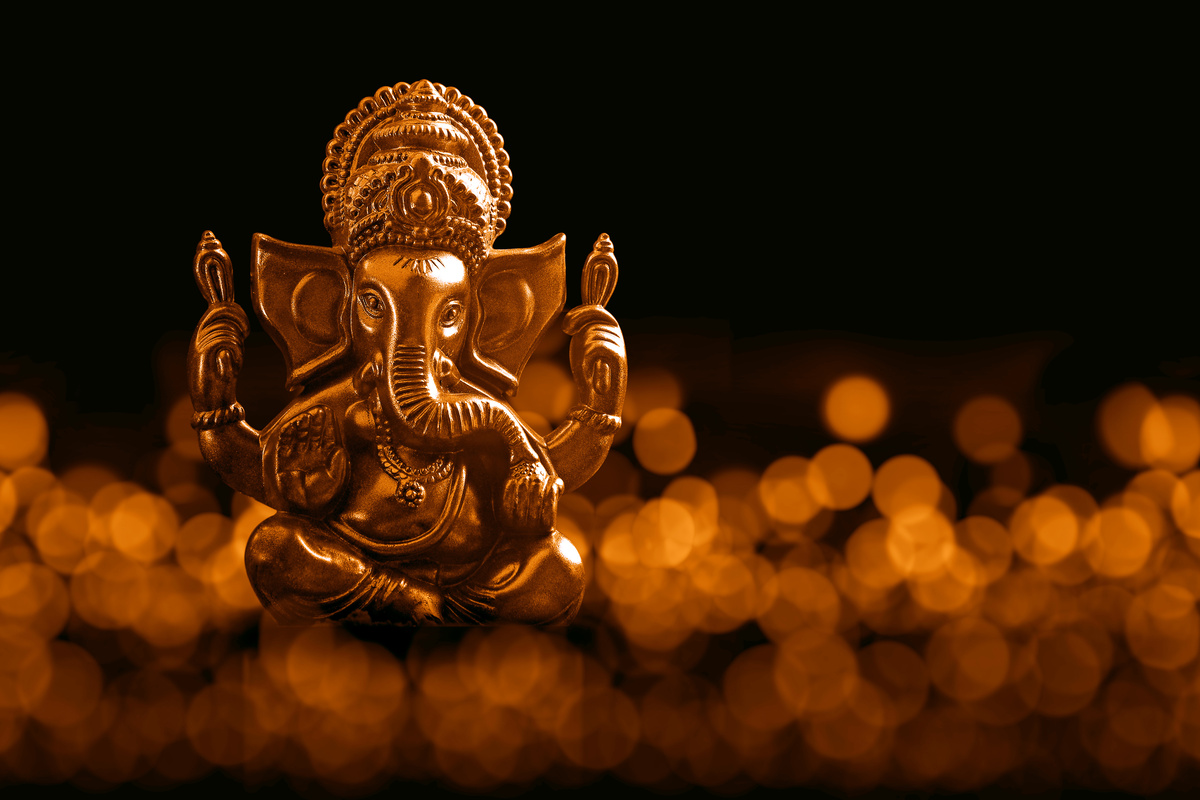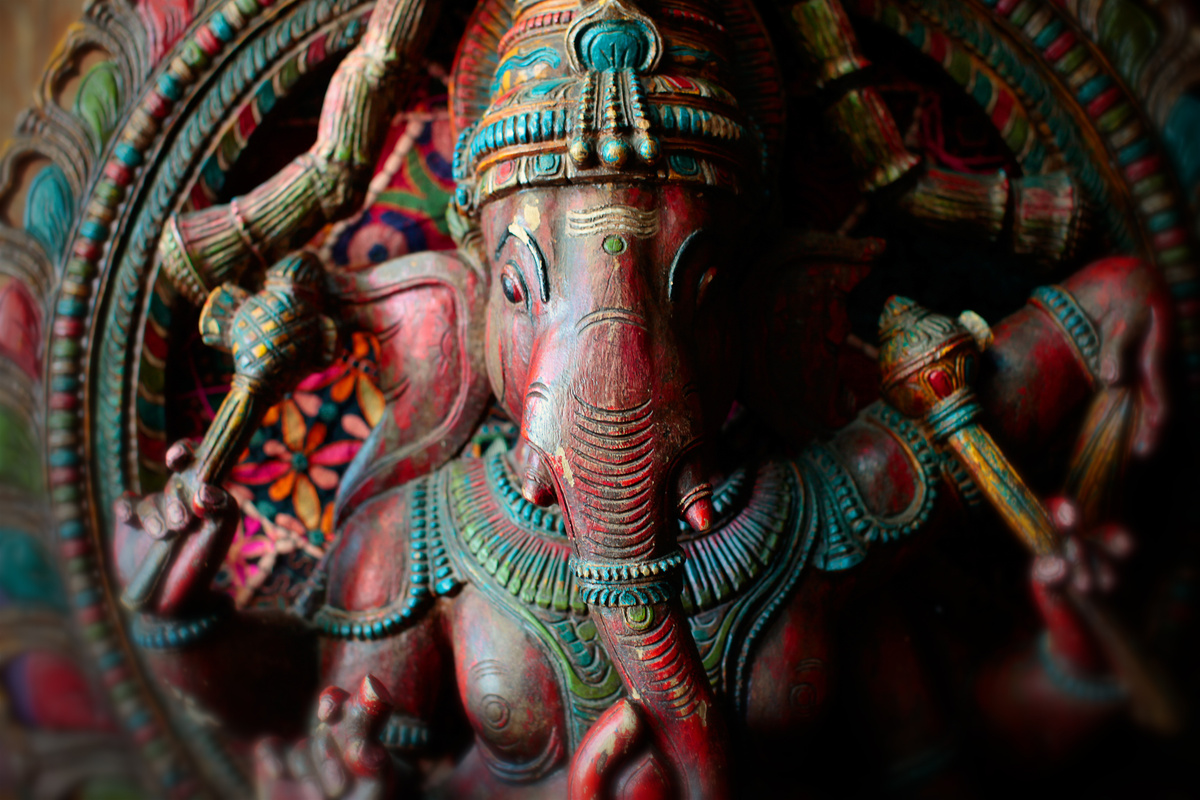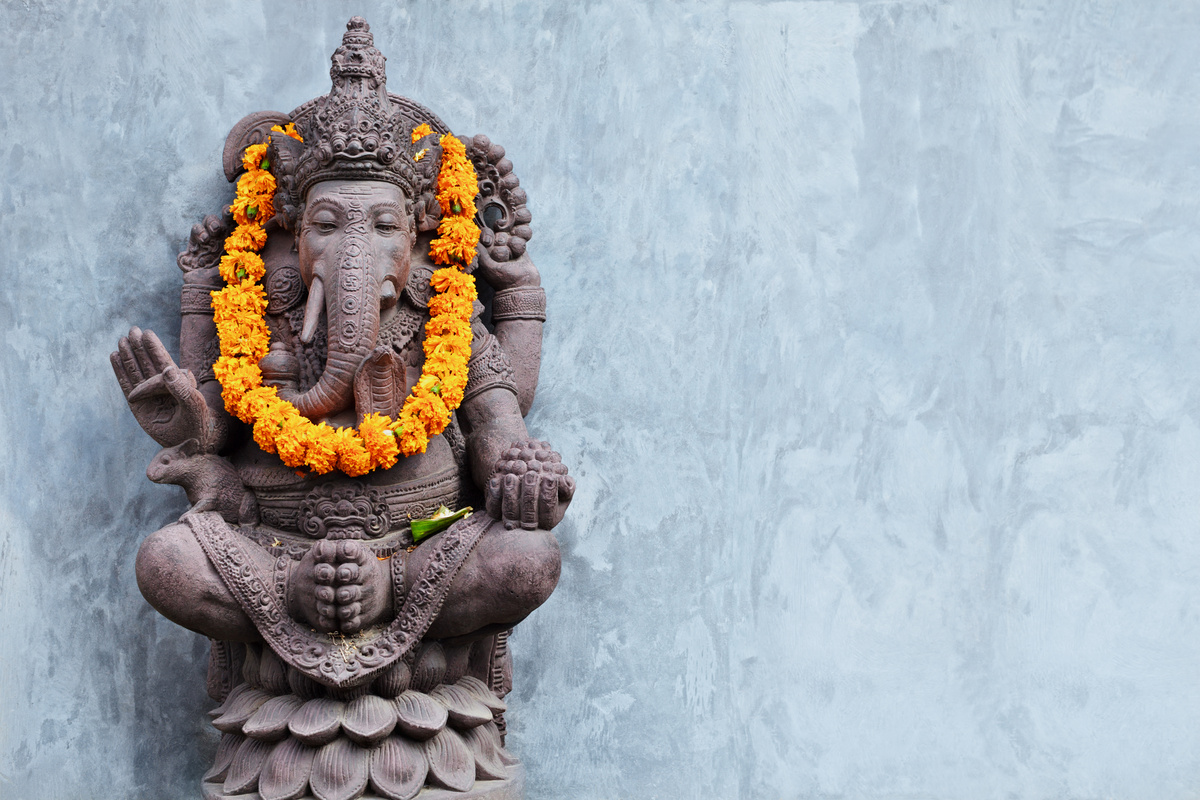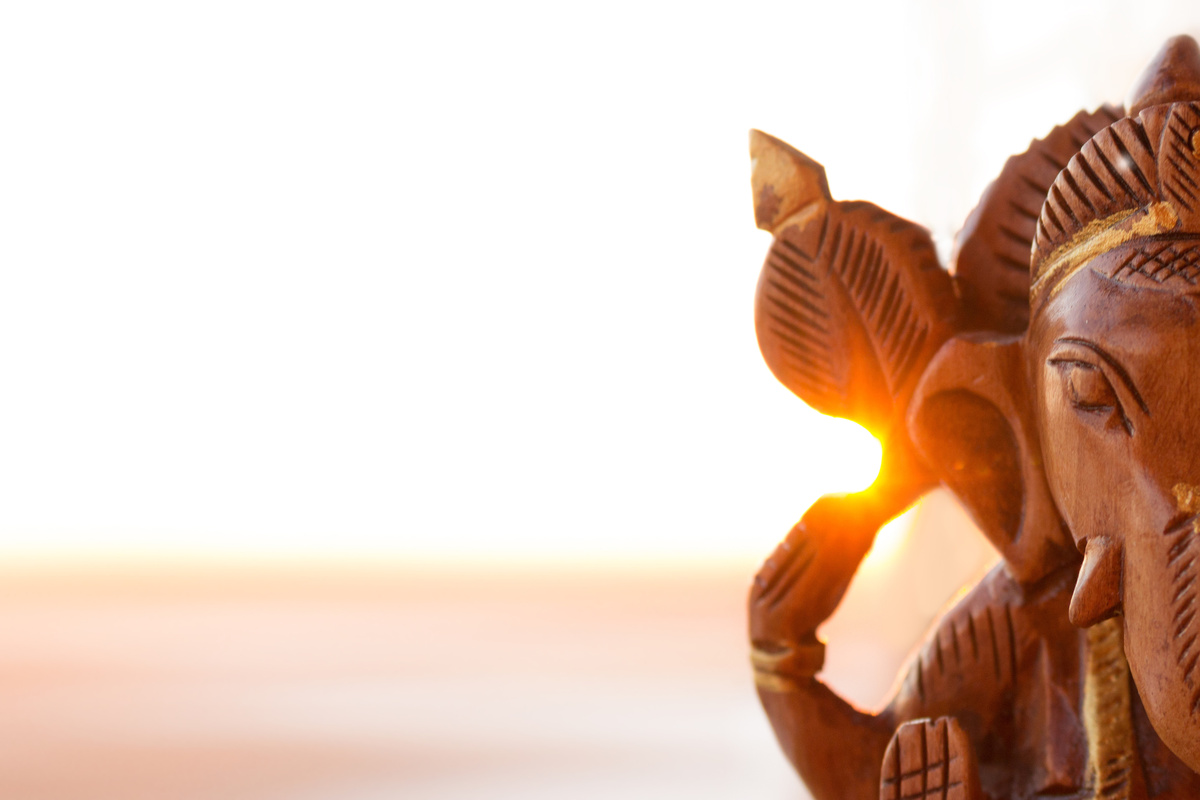Table of contents
What can you learn from God Ganesha?

The learning brought by Ganesha is related to his representation that speaks about good luck and prosperity. Besides, this is a God that helps to eliminate obstacles, therefore, teaches not to give up the goals in front of difficulties. He teaches to seek individual and family prosperity.
God Ganesha also teaches that one must live with compassion for others, as well as create strength to remove pains and thus gain full balance. There will always be learning from God Ganesha, as he represents wisdom.
In this text you will know the many facets of teachings brought by God Ganesha, you will better understand this Hindu God, the aspects of learning revealed by him, the symbolism of his image and his family origin.
Meeting the God Ganesha

God Ganesha is very well known and worshipped in Hindu cultures and religions, since he is the representation of wisdom, strength and prosperity. Thus, he is always sought by people who need support, especially when starting new life projects.
In this part of the article, get to know some more detailed information about the life of God Ganesha like, his origin, history, visual characteristics of his image and what this God represents to his followers.
Source
Ganesha's origin, according to Hindu mythology, comes from other important gods: he is the son of Shiva and Parvati. A rather contradictory combination, since Shiva represents destruction, while Parvati is the Goddess of love, also known as the Supreme Mother.
Therefore, God Ganesha has a very important origin for Hindu beliefs, coming from a family of consecrated and highly revered gods. Later on, it will be possible to understand all the characteristics of this God.
History
The story that gives origin to Ganesha's life tells that he was beheaded by his own father when he was still a boy. His story begins with the curse placed on his mother, who was prevented from having children. However, she felt very lonely, mainly because Shiva, her husband, spent long periods away from home.
Then, Parvati created Ganesha using pieces of her own skin, so that he could have a companion. One day, when Parvati entered the bath, she asked her son not to let anyone enter the house. It was at this moment that Shiva, returning early from his duties, tried to enter the house, but was stopped by her son, as his mother had requested.
However, Shiva still did not know that this was his son, raised by Parvati, so in a fight as a boy he cut Ganesha's head. Parvati seeing what had happened went into despair, when she understood the motivations of the boy and who he was, Shiva brought the boy back to life, and put him the head of the first animal that was around, in this case an elephant.
Visual characteristics
God Ganesha is represented by a person sitting cross-legged in a very characteristic way. He has an elephant head, besides 4 arms and this God represents wisdom and fortune for Hinduism.
The colors used to represent Ganesha can vary from yellow to red. However, he is always represented by a person with a huge belly, four arms, an elephant head with only one tusk and mounted on a mouse.
What does God Ganesha represent?
Hindu prayers are made to God Ganesha whenever complications happen in people's lives. This is because this is considered the God who removes obstacles, besides being seen as the one who brings success, abundance and prosperity to people who have faith in him.
Besides all these characteristics, Ganesha is also known as the master of intelligence and wisdom. Therefore, to clarify doubts and confusions that people may have when facing a situation, this God comes to the rescue by bringing the answers.
The God Ganesha is also the commander of the heavenly soldiers, so another of his characteristics is associated with strength and protection. Precisely for these characteristics that at the doors of the temples, and even in houses in India there is an image of Ganesha. Thus, these places receive protection from enemies and also much prosperity.
Learning aspects of Ganesha

The learning brought by God Ganesha, as well as other deities of any religion, talks about the need to look inside, seeking self-knowledge. It also talks about the reflection about the world in which people are living.
In this part of the text, it will be possible to know how and which are the teachings encouraged by the God Ganesha. Know the teachings about spirituality, about the psychic area and also for the material life of people.
Spiritual
Regarding spirituality, people use Ganesha's mantra to attract prosperity and remove obstacles in this area of life. In this way, people seek Ganesha's help to find ways out of the most complicated situations.
Ganesha also calls you to analyze the way you act and relate with people and the world around you, trying to have compassion, empathy and emanate good energies. In this way, you will have a fuller and happier life.
Psychic
The Gods of Hinduism are known to take care of the material, spiritual and psychic aspects in people's lives. Thus covering all the needs and bringing divine strength to all areas of human existence.
Therefore, the God Ganesha calls to look inside each one, searching for reflection and self-knowledge, because people's mind, as everything in nature, has many instabilities. And Ganesha is the wisdom that commands everything in nature, leads and protects all individuals.
Material
The God Ganesha represents, among other things, prosperity and gives people the strength to achieve their goals. He also indicates the best ways to achieve a more peaceful life.
Therefore, when people are in the process of creating a new project for their lives, both professional and personal, they ask for Ganesha's protection. For that, they perform a ritual in which offerings are made to him to bring prosperity, success and happiness to their projects.
Ganesha's teachings and symbologies

The teachings and symbologies of God Ganesha are very much represented in his image, in a similar way and in several ways. She is represented in sculptures and paintings, containing several details with important meanings for the Hindu culture.
In this part of the article you will know the various symbols and their meanings, contained in the image of Ganesha. Know what represents the head of Ganesha, the ears, the trunk, the tusk, the arms and hands, the flowers and the mouse.
Head
After having his head chopped off by his father, Shiva, without the latter knowing that Ganesha was his son, Shiva brought him back to life, putting in place of his head the head of an elephant, which was the first animal that passed by.
The elephant head, which the God Ganesha possesses, is representing great intelligence, faithfulness and a discriminating power. He uses his great intelligence and wisdom to help destroy the obstacles that arise in people's lives.
Ears
Along with the elephant's head that his father used to replace his own, Ganesha also received the elephant's large ears. This symbol is quite important and carries a teaching that is very useful in the lives of all people.
God Ganesha's big ears have the task of reminding people that it is important to listen more to people, for when people can truly listen and assimilate the teachings, they will be able to find the right way to achieve their goals.
Tromba
In the image of God Ganesha, his curved trunk represents "viveka", which means the ability to discern between what is eternal and what is infinite. In addition, it also represents the duality between strength and sensitivity.
With this symbol, Ganesha wants people to learn to have a little bit of insight, so that they can deal with situations of duality in their lives. Since they constantly live with pain and joy, health and sickness.
Prey
In the image of the God Ganesha, upon closer observation, it is possible to see that one of his fangs is broken. This fact represents sacrifices that need to be made during a person's lifetime. In addition, each of the fangs has its own meaning.
The left tusk is the symbol of human emotions, while the right tusk represents Ganesha's wisdom. This representation indicates the need for each individual to have these two sides of life in constant balance, like all dualities existing in people's lives.
Belly
The God Ganesha is represented in his image as a person with a very large belly, and this has a very deep meaning. It demonstrates Ganesha's ability to swallow and digest any and all obstacles that arise in people's lives.
By this, Ganesha wants people to understand that they need to go through all situations, no matter how difficult, because they will bring great learning and experience to them. In this way, facing obstacles during the journey will teach one to overcome all challenges.
Arms
Another interesting part of the image of God Ganesha are his arms, because in paintings and sculptures he is represented by a person with four arms. Each one of them shows a different meaning, with different attributions. The skills shown by his arms are:
- Subtle or energetic body;
- The mind;
- The intellect; and
- Conscience.
Hands
Just as God Ganesha is represented in his image by a person with four arms, he also has four hands. And just as with the arms, the hands have a distinct meaning for each of them.
These different meanings are related to the objects that each of Ganesha's hands carries, they are objects that represent something specific. Below you will understand in more detail what these meanings are.
Upper right hand
The upper right hand in Ganesha's image is holding an axe, which is a tool used by the God Ganesha to be able to destroy the obstacles that appear in life. But the meaning of this object goes a little further.
The hammer in his upper right hand is also used for him to destroy ignorance, as Ganesha is the God of wisdom and ignorance is one of the evils that cause the most damage to people's lives on earth.
Upper left hand
In his upper left hand in his image, God Ganesha carries a lotus flower which is the symbolism of one of the major goals of achievement in people's life. The lotus flower seen in his image speaks about self-knowledge.
With the achievement of a deep self-knowledge, it is possible to find the essence of each individual, the "inner self". Still on this hand, Ganesha has a rope that represents strength, attachments and earthly desires, which people need to remove from their lives.
Lower right hand
The lower right hand of God Ganesha in his image is the one that is dedicated to his devotees. It appears in the position of abhaya mudra, a gesture that means welcome in Hindu culture. It is also the representation of blessings and protection.
Another way to interpret Ganesha's lower right hand is that it represents a way to emanate positive energy. It offers welcome to those who are seeking an improvement in their spirituality and self-knowledge.
Lower left hand
In his image the God Ganesha in his lower left hand a plate of modaka, which is a typical Indian sweet, made with milk and toasted rice. This is also Ganesha's favorite dessert, which brings a stronger meaning to this symbolism.
This dish of Hindu cuisine is the symbol of peace, satisfaction and fulfillment brought about by an increase and improvement in people's knowledge. Therefore, it also speaks about the wisdom of all individuals.
Flowers
The image of God Ganesha also has several flowers, which can be yellow and red. They have the meaning of detachment from everything that is mundane and unnecessary for people's lives, which do not contribute to a more balanced life.
The teaching brought by the flowers in your image speaks about the need for people to give and share everything good they have. Therefore, it is necessary to offer others your knowledge, goods, attention and kindness.
Mouse
There are some explanations for the existence of a mouse accompanying the image of God Ganesha. One of them says that the mouse is the representation of the ego and that it is necessary that people are aware of its existence, so they can have control over it. And for Hindus, the ego means the desires and pride of people.
Another way of interpreting the existence of a mouse in Ganesha's image says that the god is seen by him as knowledge, and the mouse with his mind. Therefore, by appearing mounted on the mouse in his image, it means that consciousness is something greater and leads to control of people's minds.
Ganesha is part of the most popular family of gods in Hinduism!

God Ganesha is part of the family of other very popular gods of Hinduism, he is the eldest son of Shiva and Parvati. Ganesha has also become very popular both in India and the rest of the world. His characteristics result from the union of aspects of his parents and also by his personality.
His image, in part, is the representation of his origin story, when his father, not knowing that Ganesha was his son, decapitated him. Upon learning who he was, he brought him back to life by placing on Ganesha an elephant's head. Being highly revered by various strands of Hinduism, Ganesha is one of the most important gods in India.
This Indian God carries many meanings and symbologies in his image, and each of his icons speaks about one of his teachings, which help to give courage, strength and prosperity to those who seek his support. Therefore, the Indian population has great faith in him.
In the text brought today, we tried to bring as much information about God Ganesha, showing his characteristics, the meaning of his symbols in his image and also the teachings brought by this Indian god. Enjoy and apply these teachings in your life!

